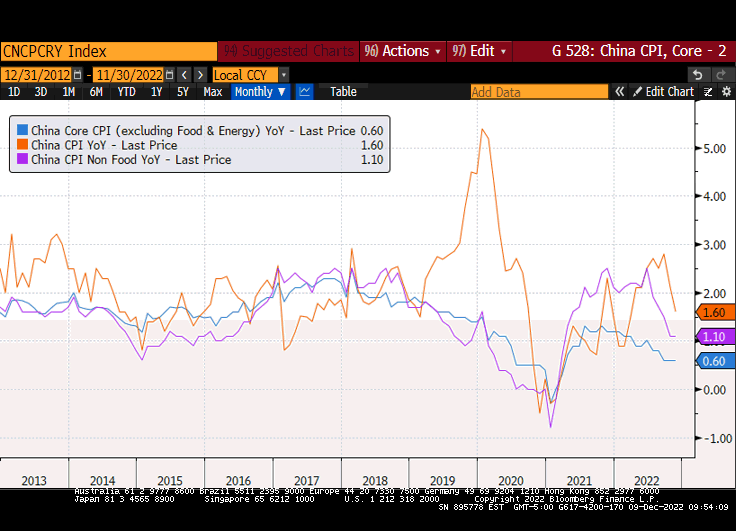Disinflation Successes – What’s Next?
09 December 2022
Read Time 2 MIN
LATAM Policy
Brazil is the world’s #1 disinflation success story. Annual headline inflation dropped from 12.13% April peak to less than 6% in November, and the Bloomberg consensus expects Brazil to be the first major emerging market (EM) - other than China - to bring inflation back to the target range (in Q1-2023). Brazil also has by far the highest ex-ante real policy rate in EM (north of 8%, when adjusted by expected inflation). So, why the local swap curve pushed the first rate-hike from March/May 2023 to September/November 2023 after the presidential elections runoff? The reason is that the market (and the central bank) are concerned about fiscal risks under new administration – check today’s reports about appointing Fernando Haddad (leftist) as Brazil’s new Minister of Finance.
China Reopening
China’s headline inflation is already below the target – and it moderated even more in November (to 1.6% year-on-year – see chart below). The key reason is soft domestic demand and the prevalence of the supply side stimulus. Authorities started to address the former a bit more aggressively lately – including a sizable support package for property developers and frequent tweaks in the zero-COVID policy. If these policy shifts are successful, inflation would be expected to go up, potentially leading to some policy tightening in 2023. In the near term, we keep an eye on the next batch of China’s credit aggregates – they should be out any day now – the consensus expects to see a big increase both in aggregate financing and new yuan loans.
Fed Policy Pivot
EM disinflation is great, but the global markets are fixated on the U.S. price trends, which will determine the timing of the Federal Reserve’s policy pivot. And today’s University of Michigan survey provided some food for thought. Both the current conditions and the expectations components were stronger than expected, but there were no changes in the very long-term inflation expectations (3%), whereas short-term (1-year) expectations dropped from 4.9% to 4.6%. This looks consistent with the near-term rate expectations embedded in Fed Funds Futures – more tightening but at a slower speed, including +50bps next week. However, there are still questions about policy room for Fed rate cuts in H2-2023. Stay tuned!
Chart at a Glance: China Inflation – Time to Turn?

Source: Bloomberg LP
Related Insights
IMPORTANT DEFINITIONS & DISCLOSURES
This material may only be used outside of the United States.
This is not an offer to buy or sell, or a recommendation of any offer to buy or sell any of the securities mentioned herein. Fund holdings will vary. For a complete list of holdings in VanEck Mutual Funds and VanEck ETFs, please visit our website at www.vaneck.com.
The information presented does not involve the rendering of personalized investment, financial, legal, or tax advice. Certain statements contained herein may constitute projections, forecasts and other forward looking statements, which do not reflect actual results. Information provided by third-party sources are believed to be reliable and have not been independently verified for accuracy or completeness and cannot be guaranteed. Any opinions, projections, forecasts, and forward-looking statements presented herein are valid as of the date of this communication and are subject to change without notice. The information herein represents the opinion of the author(s), but not necessarily those of VanEck.
The views contained herein are not to be taken as advice or a recommendation to buy or sell any investment in any jurisdiction, nor is it a commitment from Van Eck Associates Corporation or its subsidiaries to participate in any transactions in any companies mentioned herein. This content is published in the United States. Investors are subject to securities and tax regulations within their applicable jurisdictions that are not addressed herein.
All investing is subject to risk, including the possible loss of the money you invest. As with any investment strategy, there is no guarantee that investment objectives will be met and investors may lose money. Diversification does not ensure a profit or protect against a loss in a declining market. Past performance is no guarantee of future results.
